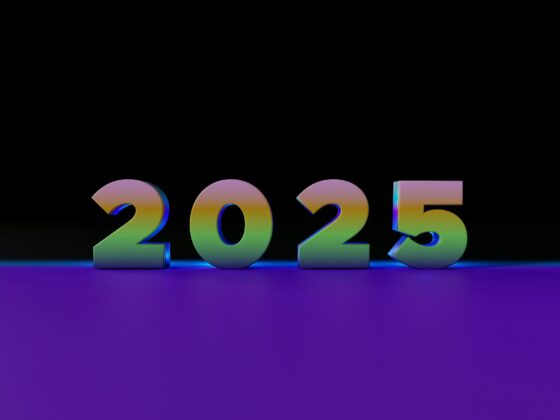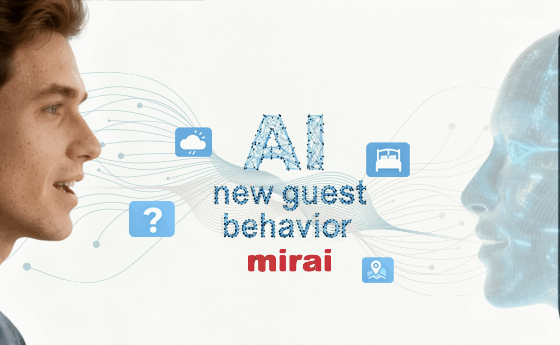
Few doubt that training is a crucial element of an effective workforce. In addition to enabling employees to provide better service and more efficient cost-management, a report from EHL Insights indicates that better training could improve the hospitality industry’s woefully high turnover rate (84.9%), which is almost double the national average (47.2%). Yet, training in and of itself is no guarantee of improvement. According to a recent Gartner study, course completion assessment scores from learning and development (L&D) programs do not correlate with performance – a phenomenon they attribute to a lack of data savvy. However, this gap may be bridged by implementing several key elements of a metrics-based learning approach that prioritizes continuous improvement, while remaining dynamic and responsive to changing business needs.
In this article we’ll discuss how a foundation based on data allows L&D leaders in the hospitality industry to bridge the gap between learning success metrics and business impact. Additionally, we’ll outline some specific ways companies can build successful training programs that directly contribute to organizational goals.
Identifying a Data Gap
According to the Gartner report, L&D leaders tend to lack the skills and knowledge required to create a data-focused learning program. Furthermore, learning programs are typically developed reactively rather than based on data. And when it comes to assessing and improving these programs, L&D technologies typically only capture surface-level participation metrics that don’t reflect real job performance improvements. In light of this, Gartner recommends a data-literate foundation that includes examining common business performance metrics to identify high-value learning opportunities.

Before we dive into how to design such a program, let’s discuss some of the fundamental elements to consider.
Foundational Elements of a Modern Learning Program
To properly implement successful training programs, multiple contributing viewpoints must be tapped to align with the organization’s goals. This starts with measuring business processes and then determining how the employee’s role impacts business results. Once this is determined, the program should:
- Establish a pre-training employee performance baseline
- Create a plan to assess training results
- Set goals for post training performance and outcomes
To do this effectively, the process must be infused with ongoing data collection and analysis.
Generating Data for Ongoing Refinement
A successful learning program involves devising an efficient way to collect relevant data, and then using that data to refine future programs as well as to design entirely new programs. This includes capturing learner behavior data, performance metrics, participant feedback and learning analytics through:
- Detailed logs of how learners interact with content (clicks, views, time spent, etc.) to refine content and how it is delivered
- Data from quizzes and assessments that highlight areas where learners struggle, guiding content updates and user support
- Participant feedback from surveys that provide data on learner experience and suggestions for improvement
- Historical data that can be used to predict future learning needs and trends that allow the program to stay relevant, adaptive, and effective
Over the past decade or so, L&D has undergone a dramatic transformation thanks to the many innovations of the digital era. The cycle of data collection, analysis, and application I’ve described lays the groundwork necessary to integrate the following elements of modern L&D design.
Anchoring a Modern Learning Program to Data
A modern workplace L&D program is anchored in a learner-centric design which emphasizes tailoring the experience to individual needs and learning styles.
Data-guided Micro-learning. Key to this design is the incorporation of micro-learning units, which break down larger topics into manageable, bite-sized segments. This strategy not only makes the content more digestible but also accommodates busy schedules by allowing learners to learn in short bursts. Data on how users interact with micro-learning units (e.g., completion rates, time spent) helps in optimizing content delivery and ensuring it can fit conveniently into their schedules. Furthermore, tracking quiz scores and assessments associated with micro-learning units allows for real-time adjustments to content difficulty and pacing.
Optimized integration of multimedia elements. A well-rounded program also integrates a mix of instructional formats–such as videos, animations, infographics–to ensure different learning styles are addressed. By capturing data on individual learning preferences, past performance, and engagement levels, L&D designers can tailor the content to specific learner needs. This process can be further refined by continuously collecting and analyzing direct feedback from learners regarding their experiences.
Gaming and simulation elements guided by data. Gamification elements can further enrich learning experiences by incorporating features such as points, badges, and leaderboards, which can boost motivation and engagement. Likewise, simulations help learners apply their knowledge in practical, real-world contexts. Data on how learners perform in these scenarios can help adjust these elements, highlighting which aspects lead to the best learning outcomes, and areas where additional training is needed.
Delivering learning across multiple devices. Recognizing the need for flexibility in how and where learning occurs, modern L&D programs are also designed to be mobile-friendly. This means that L&D programs must allow learners to access materials on smartphones, tablets, or computers, without any loss of experience quality. Data on device usage and accessibility preferences allows content to be optimized across multiple devices. Furthermore, understanding when and where learners access training materials helps in scheduling content releases and reminders.
Tying it Together for Better Customer Service, More Efficiency, and Lower Turnover
By combining the ability to continuously collect and analyze data with a learner-centric design, micro-learning, diverse instructional formats, and mobile accessibility, modern workplace learning programs create a dynamic and effective learning environment. This approach not only improves knowledge retention but also fosters a more engaging and flexible learning experience, tailored to the evolving needs of today’s workforce. The benefits of this are particularly poignant in the hospitality industry, which experiences significantly higher turnover than other industries, and in which the ability to work efficiently under high pressure circumstances are paramount to success.






